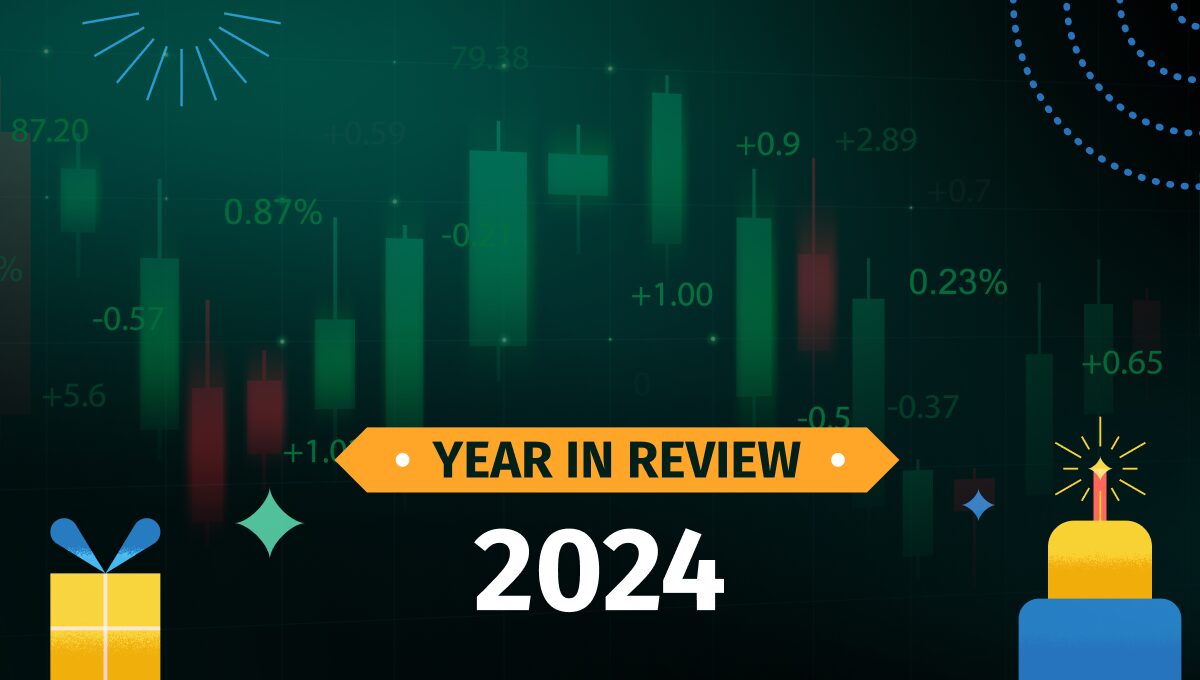Understanding the Dynamics of FIIs in the Indian Stock Market
The most awaited festival of the season is here. It’s the season of pretty lights and corners stacked up with sonpapdi boxes. I’m sure I’m not the only one who waits an entire year to buy their festive favorites around Diwali. New clothes, freshly painted walls, crockery specifically bought for the festival and so much more. Every Dhanteras, my parents make sure to visit a jeweler and get something. Diwali is all about new purchases and fresh beginnings. And what could be better than a high-growth asset for a new purchase!
Following our tradition of three years, we have launched Samvat smallcases this year too. Samvat smallcases are designed specifically for new investors to give them confidence in the markets and a sneak peek into the experience of investing with Green Portfolio. These portfolios invest in small and mid-cap stocks with rapid growth potential in the companies and sectors for the next year while combining focus with diversification across multiple key sectors to manage risk.
We have two portfolios this year – Samvat 2080: Smallcap Picks and Samvat 2080: Midcap Picks. Both portfolios are very consolidated with a strong focus on booming sectors. With a PE ratio of only 15, the smallcap portfolio has 7 stocks investing in 6 different sectors like metals and heavy industrial manufacturing. The midcap portfolio, on the other hand, has a single-digit PE of just 8 investing in 8 stocks in different sectors from telecom infra to banking.
The Samvat 2080 smallcases have the best picks as per current valuations. Considering the recent market correction, this is a good time to add these stocks at current valuations.
I have a lot more to say about the Muhurat smallcases, but I’ll leave that to our Co-founder, Divam Sharma who will be talking about the Samvat Smallcases in a YouTube live this Saturday. Set your reminders here while I move on to our topic for this week.
The investor category with the second largest share in Indian stock markets – Foreign Institutional Investors has been selling for the past few weeks, so today we are discussing whether it’s shaking things up in our markets. Let’s see!
Is increased selling by FIIs fluctuating the Indian markets?
India has one of the largest and most developed equity markets among emerging economies. It is also one of the favorites for foreign institutional investors (FIIs) who see potential for growth. Over the past decade, FIIs have increasingly participated in the Indian stock market, recognizing its strengths. India has been one of the best-performing emerging markets recently on account of its strong economic fundamentals and positive outlook for domestic demand and corporate earnings.
India has seen its stature rise on the global economic stage significantly. As one of the largest and fastest-growing major economies in the G20, we consistently reported strong macroeconomic performance over the past decade. India registered healthy annual real GDP growth rates averaging around 7%, well within the Reserve Bank of India’s inflation target zone of 4%, low single-digit CPI inflation, prudent fiscal management as measured by a declining fiscal deficit as a percentage of GDP and improving current account balances driven by robust exports and remittances inflows, which boosted forex reserves.
Due to its expanding economy and strengthening fundamentals, prominent index providers like MSCI, FTSE Russell and S&P Dow Jones Indices started increasing India’s weighting in key emerging market indices like MSCI Emerging Markets Index, FTSE Emerging Index and S&P BMI Emerging Markets Index.
Current selling by FIIs in the Indian Market
Indian equities witnessed a massive withdrawal of $2.2 billion by FIIs in September 2023, marking one of the sharpest monthly outflows since January. This came after robust FII purchases in the past 6 months that powered the indices to new highs. However, as US bond yields rose sharply, FIIs turned sellers of Indian stocks, which are seen as riskier compared to US bonds. FII selling has continued in October as well due to geopolitical tensions and expectations of higher US interest rates.
Reasons behind FII selling
The movements of foreign institutional investments in emerging markets like India are influenced by a variety of global economic, political and financial factors in today’s highly interconnected world. The three main reasons behind the recent outflows from Indian equities are all interlinked and demonstrate how events thousands of miles away can impact capital flows.
1. Rising US bond yields: The rapid rise in US treasury bond yields to multi-year highs has made US bonds more attractive for investors. As the yields increase, fixed income returns in the US go up. This prompts foreign investors to shift their funds back to US markets from other regions for better returns. Moreover, higher US yields drive up global financing costs making emerging market investments appear less lucrative.
During periods of high market uncertainty, foreign institutional investors shift allocations away from risky emerging market equities toward safer fixed income instruments like government or corporate bonds. Bonds offer stable returns through interest in volatility, while stock values fluctuate wildly. Bonds also have shorter exposure than equities.
2. Geopolitical tensions and commodity price rise: The ongoing conflict between Israel and Hamas has escalated geopolitical risks in the Middle East region. This is pushing up Brent crude oil prices sharply above $90 per barrel. Sustained high oil prices raise concerns about rising inflation globally. Geopolitical tensions in key oil producing regions make investors wary of emerging markets like India which are dependent on crude imports.
3. Risk-off sentiment and profit booking: The risk-off sentiment in global markets impacted high growth emerging economies. Weakening economic data and rising price pressures dampened the risk appetite. Having invested in Indian stocks over the past year, foreign investors booked some profits given the uncertain environment.
Rising US yields and geopolitical tensions prompted FIIs to adopt a safer approach by pulling money out of riskier emerging market assets such as equities. They shifted funds towards safe haven assets like US treasury bonds which offer greater stability during times of volatility in comparison to emerging market stocks.
Homegrown Support: Leveraging DII & Retail Participation
India has been witnessing tremendous participation from retail investors through Systematic Investment Plans (SIPs). In September 2023, the total monthly SIP contribution stood at a record high of Rs. 16,042 crore, surpassing Rs. 15,000 crore for the first time. This was significantly higher than the SIP inflow of Rs. 12,693 crore seen in September 2022. The number of SIP accounts and folios has also consistently grown, reaching over 7.12 crore and 15.71 crore respectively last month.
Along with strong inflows from Domestic Institutional Investors like insurance and pension funds managing over Rs. 25 lakh crore in assets, this steady domestic demand from the realization of equities has provided the Indian stock market with a solid foundation. Even during periods of high FII outflows, the underlying support from growing retail participation and DII investments ensures market fundamentals remain robust. Their inflows help offset foreign outflows and maintain stability, highlighting India’s emergence as a resilient emerging economy.
Conclusion
The recent correction has brought the Nifty to around 19000 levels, providing a good entry point for long-term investors. With strong domestic demand, India is well-positioned to keep growing at a healthy pace. As the largest democracy and a young population, India’s consumption and middle-class story is intact. The current dip provides an opportunity to buy into quality companies at reasonable prices and benefit from India’s upward economic trajectory in the coming years.
Sources & References: Forbes India, Money Control, Live Mint
Use ‘DIWALI2023‘ to unlock a 30% discount on the SAMVAT smallcases by Green Portfolio
Explore the Samvat 2080: Mahurat Smallcap Picks! smallcase
Liked this story and want to continue receiving interesting content? Watchlist Green Portfolio’s smallcases to receive exclusive and curated stories!
And for all you Green Portfolio subscribers, we’re rolling out Exclusive Perks!

Use Promocode SCMINT30 on Mint Premium’s 1 Year or 2 Year plan to get 30% OFF on your purchase! Offer Valid until 31st December, 2023.
Green Portfolio is a SEBI Registered (SEBI Registration No. INH100008513) Research Analyst Firm. The research and reports express our opinions which we have based upon generally available public information, field research, inferences and deductions through are due diligence and analytical process. To the best our ability and belief, all information contained here is accurate and reliable, and has been obtained from public sources we believe to be accurate and reliable. We make no representation, express or implied, as to the accuracy, timeliness, or completeness of any such information or with regard to the results obtained from its use.






